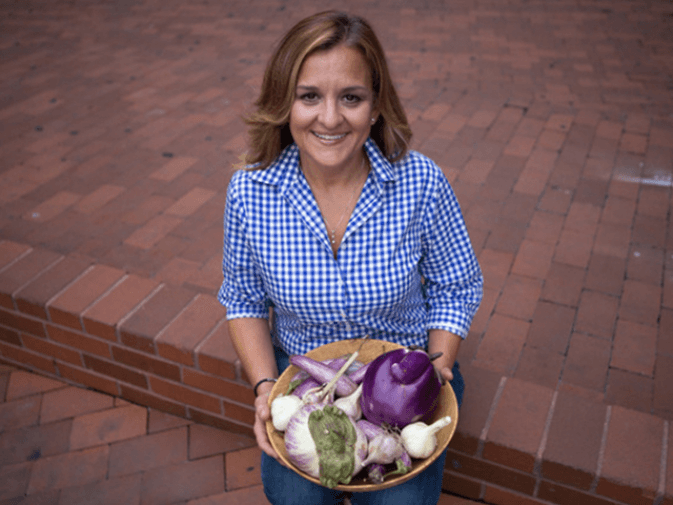
Maria O. says, “I’m a huge fan of the Money Girl Podcast and am also a Get Out of Debt Fast student. I’ve taken your financial advice and am glad to say that my husband and I are in a much better financial situation now.
We both have travel rewards credit cards with zero balances that we haven’t used in over a year. We know that canceling cards isn’t advisable, but we really want to stop paying the $95 annual fee. My husband’s credit score is 780 and mind is 818. What do you recommend?”
Maria, thanks so much for your question and being a part of the Money Girl community!
Before you cancel a credit card, it’s critical to understand how it will affect your entire financial life. Whether you should get rid of a card depends on a variety of factors, including your future financial goals.
In this post, I’ll cover 10 dos and don’ts for when to cancel a credit card. You’ll learn how to manage these accounts wisely so they improve your finances and don’t hurt them.
10 Dos and Don’ts for When to Cancel a Credit Card
- Do cancel credit cards that are a net loss.
- Do cancel credit cards with low credit limits first.
- Do cancel credit cards that tempt you to overspend.
- Do cancel credit cards to simplify your financial life.
- Do cancel credit cards you recently opened by mistake.
- Don’t cancel your only credit card.
- Don’t cancel credit cards you’ve owned a long time.
- Don’t cancel multiple cards at the same time.
- Don’t cancel credit cards if you’re planning to make a big purchase.
- Don’t cancel credit cards because you’ve made late payments.
Before I cover each of these dos and don’ts, here’s an overview of why building good credit and using credit cards the right way is so important.
The Benefits of Building Your Credit
Having good credit simply means that you have a reliable financial track record according to the data in your credit history with the nationwide credit bureaus: Equifax, Experian, and TransUnion. Different credit scoring models use that data to calculate credit scores, which act as shortcuts for various businesses to evaluate you quickly.
When you have high credit scores, potential lenders and merchants have more confidence that you’ll be a good customer who pays their bills on time. That’s an incentive for them to give you top-tier offers, which saves you money.
Having good credit scores allows you to get the most competitive interest rates and terms when you borrow money using credit cards, mortgages, car loans, student loans, and personal loans. For instance, paying just 1% less for a mortgage could save you over $100,000 on the cost of a 30-year, fixed-rate loan, depending on the total amount you borrow.
However, even if you never borrow money to finance a home or charge a vacation to a credit card, having good credit gives you other significant benefits, including:
- Lower auto insurance premiums (in most states)
- Lower home insurance premiums (in most states)
- More opportunities to rent a home or apartment
- Lower security deposits on utilities
- More government benefits
- Better chances to get a job
See also: 12 Credit Myths and Truths You Should Know
The Connection Between Credit Cards and Your Credit
The only way to build credit is to have active credit accounts in your name and to use them responsibly over time. That’s where credit cards come into play.
One of the biggest factors in how credit scores are calculated is called your credit utilization ratio. It only applies to revolving accounts, such as credit cards and lines of credit, which don’t have a fixed term. Credit utilization isn’t measured for installment loans, such as mortgages and car loans, because they do have a set ending or maturity date.
Credit utilization is a simple formula that equals your total account balance divided by your total credit limit. For example, if you have a credit card with a balance of $1,000 and a credit limit of $2,000, your utilization ratio is 50% ($1,000 / $2,000 = 0.50).
Keeping a low utilization, such as below 20%, is optimal for good credit. So, by paying down your balance on the card to $400, you could reduce your utilization ratio to 20% ($400 / $2,000 = 0.20) and boost your credit scores.
A low utilization ratio says that you’re using credit responsibly. A high ratio indicates that you may be maxed out and even getting close to missing a payment.
Many people mistakenly believe that getting rid of their credit cards will automatically improve their credit. The surprising truth is that canceling credit cards usually hurts it because your available credit on the card plunges to zero, which instantly increases your utilization and causes your credit scores to drop right away.
However, whether closing a card is right for you really depends on your current and future financial situation. Use the following do and don’ts to know when ditching a card is best and how to do it with minimal damage to your credit.
See also: 5 Ways to Get a Loan With Bad Credit
1. Do cancel credit cards that are a net loss.
If you’re like Maria and have great credit with an unused card that’s costing you money, you may want to consider cancelling it. Many rewards cards come with an annual fee, especially when they offer cash back, airline miles, or points for merchandise. In some cases, using the rewards easily offsets the annual fee.
However, if you won’t use the card or can’t afford the annual fee, common sense should be the deciding factor, not your credit score. However, one option is to replace a card that charges an annual fee with another card that doesn’t, ideally before you cancel the first one. That allows you to swap out one credit limit for another one and avoid any damage to your credit.
2. Do cancel credit cards that tempt you to overspend.
I also don’t recommend keeping a credit card if it tempts you to overspend. Taking a temporary hit to your credit might be worth it to prevent bigger problems in your financial life.
3. Do cancel credit cards to simplify your financial life.
If you’ve missed payments or can’t keep up with transactions because you have too many cards, it might be worth it to strategically cancel one or more credit cards. Keep reading for tips to minimize the potential damage to your credit.
4. Do cancel credit cards with low credit limits first.
If you cancel a credit card, choosing one with a higher credit limit poses more of a threat than getting rid of one with a smaller limit. The lower your credit limit on a card, the less closing it could negatively affect your credit.
As I previously mentioned, for optimal credit, it’s best to never carry a balance that exceeds 20% of your available credit limit. If you’re not sure what your credit limits are, you can review them by getting a free copy of your credit report at annualcreditreport.com.
5. Do cancel credit cards you recently opened by mistake.
A common credit dilemma is what to do after opening a new credit card that you felt pressured into at a retail store. Sales clerks make getting a huge discount with a new card signup sound too good to pass up. In some cases, you may not even realize that what you’re signing up for is a credit card.
If you’re loyal to a store and make frequent purchases there, having its branded credit card can give you nice savings and promotional benefits that make it worthwhile. While you can’t erase the card from your credit history, if you decide that you’d rather not have the account, closing it sooner rather than later is better for your credit.
Free Resource: Credit Score Survival Kit - a video tutorial, e-book, and audiobook to help build credit fast!
6. Don’t cancel your only credit card.
In addition to maintaining low credit utilization, the health of your credit depends on having a mix of credit accounts. That shows you can handle different types of credit, such as installment loans and revolving accounts. But if you cancel your only credit card, that would leave you deficient in the revolving credit category.
It’s better to spread out your balances on multiple cards and maintain low utilization on each of them, rather than have one card that you charge to the limit.
Therefore, I don’t recommend cancelling a credit card if it’s your only one. Having at least one card in the mix rounds out your credit file. Ideally, you would have a total of two or three cards that come from different issuers, such as Visa, Mastercard, American Express, or Discover.
If you have more than one line of credit or credit card, most credit scoring models calculate your utilization ratio for each account and collectively on all your accounts. So, it’s better to spread out your balances on multiple cards and maintain low utilization on each of them, rather than have one card that you charge to the limit.
Depending on the types of charges you make, you may need a low-rate card for times when you must carry a balance and a higher-rate rewards card for charges that you always pay off each month. No annual fee cards are best, but as I previously mentioned, rewards cards that come with a fee may be worth it.
7. Don’t cancel credit cards you’ve had for a long time.
As if credit utilization and having a mix of credit accounts weren’t enough, a cancelled credit card hurts your credit in other ways. Another factor that’s used in calculating credit scores is how long you’ve had credit accounts.
Having a long, rich credit history boosts your scores and makes you appear less risky to potential lenders and merchants. Cancelling a long-standing credit card causes your average age of credit history to decrease, which hurts your credit. So, value credit cards that you’ve had for a long time more than those you’ve recently opened.
8. Don’t cancel multiple cards at the same time.
If you have more than one credit card that you want to cancel, don’t shut them all down at the exact same time. It’s better to space out cancellations over time, such as one every six months, to minimize the damage to your credit health.
9. Don’t cancel credit cards if you’re planning to make a big purchase.
If you’re planning to finance a big purchase, such as a home or vehicle, in the next three to six months, it’s not wise to cancel any credit cards. If your utilization rate increases and your credit scores suddenly take a dive during the application process, you may ruin your chances for getting a low-interest loan.
Maria didn't mention if she's looking to use her great credit to borrow money any time soon. But it's an important issue that I recommend she consider.
10. Don’t cancel credit cards because you’ve made late payments.
Never cancel a credit card with negative information, such as late payments or being in collections, thinking that it will disappear from your credit file. All credit accounts stay on your credit report for seven years from the date you became delinquent, even after you or a card issuer closes it. Accounts with only positive information remain in your credit file longer, for up to 10 years
What Should You Do With Unused Credit Cards?
If you or Maria go through these dos and don’ts and decide that it’s better not to cancel a credit card, use it occasionally to make small purchases that you pay off in full. That keeps it active and allows you to continue adding positive information to your credit history.
However, I don’t recommend keeping a credit card that you’re not using responsibly or that tempts you to overspend. Taking a temporary hit to your credit might be worth it to prevent bigger problems in your financial life.
Get More Money Girl!
To connect on social media, you’ll find Money Girl on Facebook, Twitter, and Google+. Also, if you’re not already subscribed to the Money Girl podcast on Apple Podcasts or the Stitcher app, both are free and make sure that you’ll get each new weekly episode as soon as it’s published on the web. The show is also on the Spotify mobile app! Click here to sign up for the free Money Girl Newsletter!
Download FREE chapters of Money Girl’s Smart Moves to Grow Rich
Destroy Old Credit Cards image courtesy of Shutterstock


 If you or someone you know has had appendicitis, the flu, herpes, hemophilia, leukemia, Parkinson’s disease, or even trouble digesting lactose, then your life is intertwined with that of Henrietta Lacks, the great-granddaughter of a slave born in southern Virginia. Hers is a story of revolution in medical science but also of a complicated link between medical research and the people that research is supposed to serve.
If you or someone you know has had appendicitis, the flu, herpes, hemophilia, leukemia, Parkinson’s disease, or even trouble digesting lactose, then your life is intertwined with that of Henrietta Lacks, the great-granddaughter of a slave born in southern Virginia. Hers is a story of revolution in medical science but also of a complicated link between medical research and the people that research is supposed to serve.


 Order Ellen's book
Order Ellen's book 


